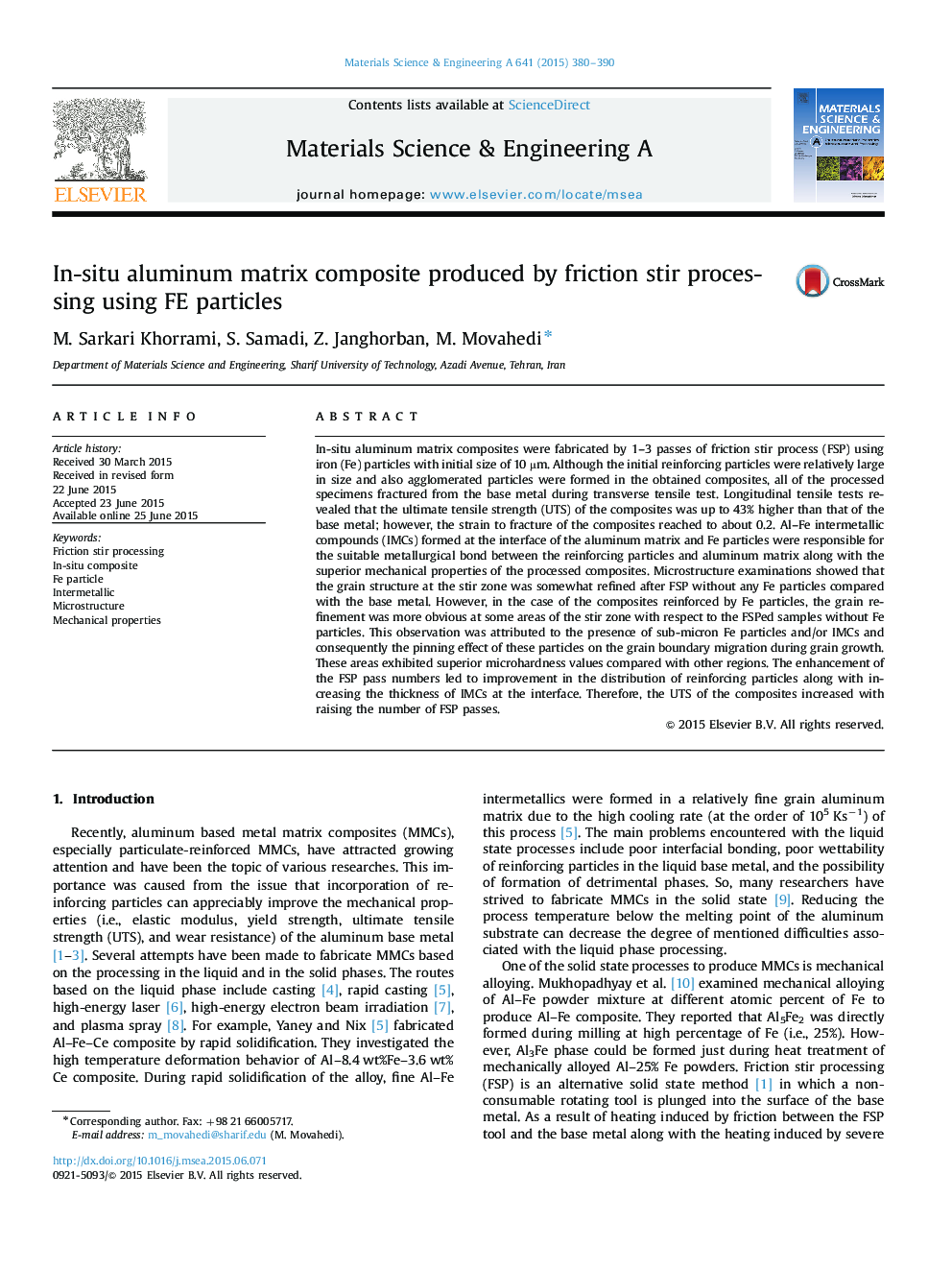| کد مقاله | کد نشریه | سال انتشار | مقاله انگلیسی | نسخه تمام متن |
|---|---|---|---|---|
| 1574187 | 1514702 | 2015 | 11 صفحه PDF | دانلود رایگان |
عنوان انگلیسی مقاله ISI
In-situ aluminum matrix composite produced by friction stir processing using FE particles
دانلود مقاله + سفارش ترجمه
دانلود مقاله ISI انگلیسی
رایگان برای ایرانیان
کلمات کلیدی
موضوعات مرتبط
مهندسی و علوم پایه
مهندسی مواد
دانش مواد (عمومی)
پیش نمایش صفحه اول مقاله

چکیده انگلیسی
In-situ aluminum matrix composites were fabricated by 1-3 passes of friction stir process (FSP) using iron (Fe) particles with initial size of 10 µm. Although the initial reinforcing particles were relatively large in size and also agglomerated particles were formed in the obtained composites, all of the processed specimens fractured from the base metal during transverse tensile test. Longitudinal tensile tests revealed that the ultimate tensile strength (UTS) of the composites was up to 43% higher than that of the base metal; however, the strain to fracture of the composites reached to about 0.2. Al-Fe intermetallic compounds (IMCs) formed at the interface of the aluminum matrix and Fe particles were responsible for the suitable metallurgical bond between the reinforcing particles and aluminum matrix along with the superior mechanical properties of the processed composites. Microstructure examinations showed that the grain structure at the stir zone was somewhat refined after FSP without any Fe particles compared with the base metal. However, in the case of the composites reinforced by Fe particles, the grain refinement was more obvious at some areas of the stir zone with respect to the FSPed samples without Fe particles. This observation was attributed to the presence of sub-micron Fe particles and/or IMCs and consequently the pinning effect of these particles on the grain boundary migration during grain growth. These areas exhibited superior microhardness values compared with other regions. The enhancement of the FSP pass numbers led to improvement in the distribution of reinforcing particles along with increasing the thickness of IMCs at the interface. Therefore, the UTS of the composites increased with raising the number of FSP passes.
ناشر
Database: Elsevier - ScienceDirect (ساینس دایرکت)
Journal: Materials Science and Engineering: A - Volume 641, 12 August 2015, Pages 380-390
Journal: Materials Science and Engineering: A - Volume 641, 12 August 2015, Pages 380-390
نویسندگان
M. Sarkari Khorrami, S. Samadi, Z. Janghorban, M. Movahedi,